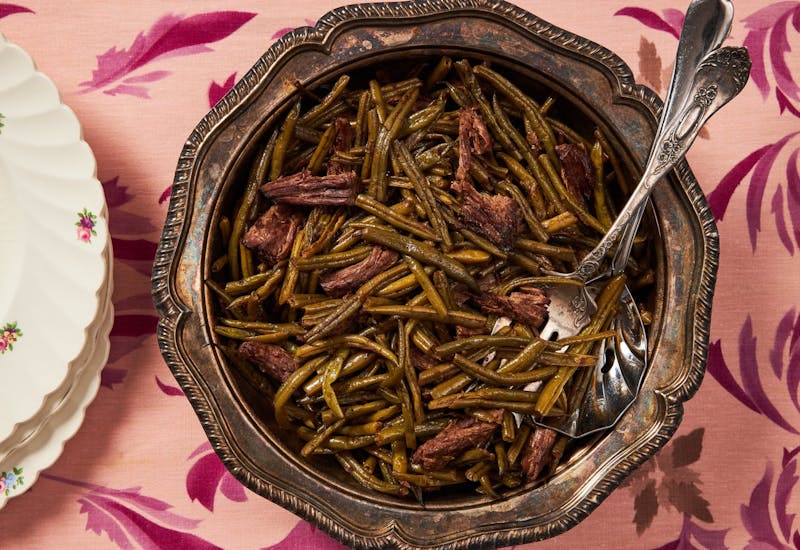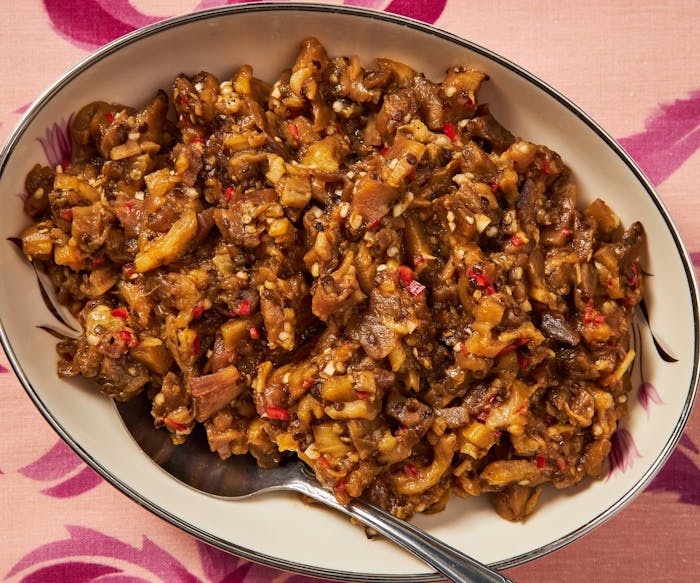Shared by Frida Goldberg and Mimi Bozo
How One Cook, Who Knew No One, Built a Syrian Community Around the Table
How One Cook, Who Knew No One, Built a Syrian Community Around the Table
Family Journey
For Adelle Bozo and her husband Ya’akov, there was always room at the table in their Jerusalem home. Friends, neighbors, and new immigrants, who needed a place to stay until they were settled, cycled through their doors. “We used to call our house ‘Hotel Bozo,’” says Mimi Bozo, Adelle’s youngest daughter.
Adelle’s five children would invite friends over for lunch and the kids could help themselves to fresh fruit, which was always in their home, no matter how expensive it was at the market. Adelle kept date-filled cookies, maamoul (with nut and pistachio filling), bourekas, and kubbeh in the freezer to have on hand, as well. “No matter how many unexpected guests showed up, there was always enough food and everyone was always welcome,” says Frida Goldberg, Adelle’s youngest daughter.
“No matter how many unexpected guests showed up, there was always enough food and everyone was always welcome”
Raised in a wealthy Syrian family that moved to Urfa in southern Turkey, Adelle was accustomed to living in a large home full of people, Mimi adds. But, in her late teens, her parents arranged her marriage to her cousin Ya’akov, and Adelle arrived in Jerusalem in 1938 knowing no one but him.
Adelle found friends in the local Syrian community, connecting over cups of coffee and games of Rummy that were played on Saturday evenings. And she built deep connections through her cooking, preparing recipes she learned from her mother, which she shared with friends, while picking up tips and ideas from them.
There was freshly-made food in the house everyday, says Frida. On Thursdays, her mother would prepare simpler dishes without meat for the family so she could focus her efforts on meals for Shabbat where she served an overflowing table of chicken with potatoes, green beans stewed with meat, a spread of several salads like roast eggplant and bulgur muhammara, rice, and lahm bi ajeen, a flatbread topped with ground meat and pomegranate concentrate that Adelle made from scratch. “In the early days, the pots would be taken to stay overnight at the local bakery and the kids would be sent to bring them back for the meal,” Mimi explains, and later, in 1956, the family was one of the first in the neighborhood to have an oven in their home.
For decades, no one in the family learned Adelle’s recipes — no one needed to, says Mimi. Adelle hosted the family every week for most of her life, and only in her late 90s did she transition to hosting just for the holidays. But, the recipes weren’t lost. When Frida was in her late 40s, she started to go to her mother’s home twice a week to learn her recipes, which she wrote down in a small notebook.
One of Adelle’s great-granddaughters Maya Goldberg, who created a photo essay called “Family Kitchen,” remembers Adelle’s cooking clearly. “Everything I know about her is through her food,” says Maya. She can still picture her climbing up and down four flights of stairs to buy 20 kilos of pomegranates, which she would seed and simmer for hours to make pomegranate concentrate for her lahm bi ajeen. The flavor of the dish is still imprinted in her mind nearly a decade since Adelle passed away.
“Everything I know about her is through her food”












